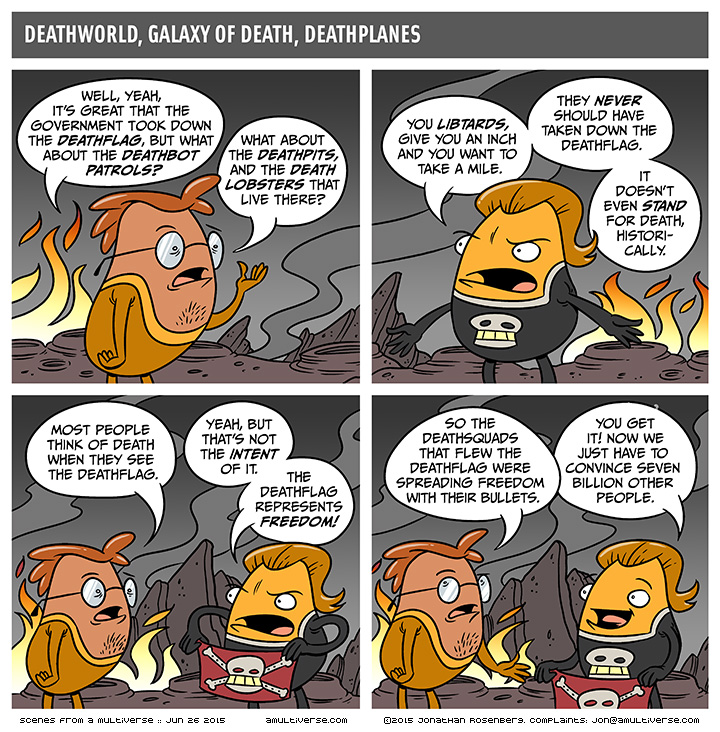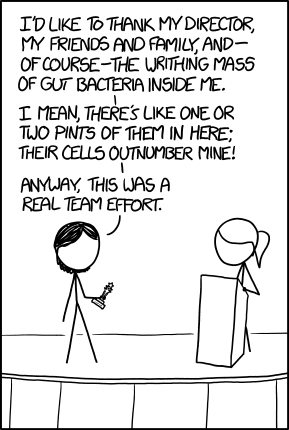Art Movements is a weekly collection of news, developments, and stirrings in the art world.
Just days before Friday’s Supreme Court of the United States decision making same-sex marriage legal in all 50 states, New York City’s Preservation Commission granted landmark status to the Stonewall Inn, ground zero for the city’s gay rights movement. The Commission will hold a series of public hearings in the fall as part of a bid to clear its backlog of landmark applications.
Amid the ongoing destruction of antiquities in Syria and Iraq, the UK’s culture secretary, Jon Whittingdale, stated that the Conservative government is committed to ratifying the Hague Convention on cultural property. The UK failed to ratify the convention in 1954 after arguing that it would be ineffective.
Abu Dhabi’s Tourism and Development Investment Company confirmed that the outpost of the Louvre museum currently under construction on Saadiyat Island will be delayed once more. Though it was most recently expected to open in late 2015, the opening has been pushed back to late 2016.
The Museum of Modern Art installed artist Gilbert Baker’s iconic Rainbow Flag — which it recently acquired — in its contemporary design galleries in observance of today’s same-sex marriage decision by the US Supreme Court.
ISIS militants reportedly planted land mines and explosives around the perimeter of the ancient city of Palmyra. The group destroyed two of the city’s mausoleums on Monday. Read Hyperallergic’s coverage here.
British film-maker Mike Slee used a helicopter to film undocumented rock art in unexplored sections of Chiribiquete national park, Colombia. Professor Fernando Urbina, a rock art specialist from the National University of Colombia, told the Guardian that the paintings “could be up to 20,000 years old.”
Scottish artist Dominic Currie claims he found a painting by Pablo Picasso rolled up in a suitcase in his attic.
The US Fish and Wildlife Service destroyed over a ton of confiscated ivory in Times Square.
David Shrigley designed a new mascot for Partick Thistle Football Club named “Kingsley.”
A New York judge ruled against a group of Orange County residents who opposed the demolition and reconstruction of the Orange County Government Center, a celebrated Brutalist structure.
Following the leads of several major museums, Disney has decided to ban selfie sticks at all its theme parks.
A number of architects — including Renzo Piano, Zaha Hadid, and Frank Gehry — wrote letters to the UK’s heritage minister Tracey Crouch to make the case that Robin Hood Gardens (aka Poplar housing estate) should be given listed status.
British culture minister Ed Vaizey placed a temporary export ban on Paul Cézanne’s “Vue sur L’Estaque et le Chateau d’If” (1883–85). It is hoped that a UK buyer will match the £13.5 million (~$21.2 million) asking price for the work.
Archaeologists from the University of Victoria in Canada discovered human footprints on Calvert Island believed to be 13,200 years old, which would make them the oldest ever found in North America.
A court in Rotterdam ruled that Danh Vō must honor a prior agreement to create an artwork for collector Bert Kreuk. The collector filed a lawsuit against Vō last September after claiming that the artist failed to create an artwork for Transforming the Known, an exhibition of Kreuk’s collection at the Gemeentemuseum. The court ruled that Vō and his gallerist Isabella Bortolozzi will be jointly fined €10,000 (~$11,100) a day for late delivery of the work (with a the maximum penalty set at €200,000, or about $223,000). The artist stated that he intends to appeal the ruling.
A public sculpture of a truck by Erwin Wurm was given a parking ticket in Karlsruhe, Germany.
Jonathan Green, director of the Richard Green Gallery in London, discovered a Claude Monet pastel drawing taped to the back of a work by the artist that he had purchased at auction.
Anna Rhodes, a Masters student at the University of Manchester, re-identified the subject matter of a 15th-century Renaissance painting. The work, which depicts Saint Catherine of Alexandria, had been incorrectly described as “The Virgin Mary Releasing a Soul from Purgatory at the Intercession of King David” for over 100 years.
The Vatican requested tattoo removal equipment in order to remove dirt particles from the sculptures in its collection.
Miami hedge fund manager and art collector Bruce Berkowitz has abandoned plans to build a new 10-story building in the city’s Edgwater district to house his company, his foundation, and large-scale installations by James Turrell and Richard Serra, blaming municipal indecision.
The £6-billion (~$9.4 billion) project to redevelop London’s enormous Battersea Power Station will include the creation of a new arts venue, to be developed by the Battersea Arts Centre. The power station’s redevelopment is due to be complete in 2025.
Herzog & de Meuron were hired to redevelop the Kunsthaus Tacheles in Berlin. The warehouse was occupied by artists following the fall of the Berlin Wall in 1989.
The non-profit + Pool launched a “feasibility” study as part of its mission to establish a floating, water filtering swimming pool in New York City.
Transactions

Edgar Degas, “Petite Danseuse de Quatorze Ans” (1922), bronze with muslin skirt and satin hair ribbon on a wooden base, height (including base) 39 7/8 inches (Photo by Tristan Fewings/Getty Images for Sotheby’s) (click to enlarge)
A bronze cast of Edgar Degas’ “Petite Danseuse de Quatorze Ans (Little Dancer of Fourteen Years)” (1922) sold at Sotheby’s for £15.8 million (~$24.9 million), a record for a sculpture by the artist. None of the Degas’ wax sculptures were cast during his lifetime (1834–1917).
Painter Matthew Offenbacher used his $25,000 prize from the Neddy at Cornish Awards to purchase and donate seven works of art to the Seattle Art Museum. Offenbacher and his partner Jennifer Nemhauser conceived of their donation as an artwork, which they titled “Deed of Gift.”
A postcard featuring a drawing by Pablo Picasso sold at auction for €166,000 (~$188,000), a record for a postcard at auction. Picasso sent the card to Guillaume Apollinaire from Paris sometime on, or just before, September 5, 1918. The postcard never arrived since the artist wrote the address in Spanish.
A collection of watercolors and drawings by Adolf Hitler sold at auction for £286,000 (~$448,000).
Transitions
Eugenio Valdés Figueroa was appointed director and chief curator of the Cisneros Fontanals Art Foundation (CIFO) in Miami.
The Independent Art Fair will relocate from the former Dia Art Foundation in Chelsea — which is slated to be demolished and replaced with condos — to Spring Studios in Tribeca. The fair is also planning to devote its November 2016 edition, Independent Projects, exclusively to women artists.
Lauren Cornell was promoted to curator and associate director [of] technology initiatives at the New Museum.

An interior shot of the newly renovated Museum of the City of New York (courtesy MCNY) (click to enlarge)
The Museum of the City of New York completed its $97-million renovation.
The Morgan Library and Museum made a number of appointments. Roger S. Wieck will lead the department for Medieval and Renaissance manuscripts, William M. Voelkle was appointed senior research curator, and Joshua O’Driscoll was appointed assistant curator.
Michelle Puetz was appointed curator of media arts at the Mary and Leigh Block Museum of Art at Northwestern University.
Steven D. Lavine, the president of the California Institute of the Arts (CalArts), will step down in May of 2017.
Accolades
Paris architecture firm Moreau Kusunoki Architectes won the competition to design the proposed Guggenheim Helsinki Museum.
The Kresge Foundation announced the recipients of the 2015 Kresge Artist Fellowships. Writer and Hyperallergic contributor Sarah Rose Sharp received an award in the arts criticism category.
The Getty Foundation revealed the winners of the 2015 Keeping It Modern grants, which support projects devoted to preserving modern architecture.

Miriam Schapiro, “Anonymous Was a Woman” (1976), acrylic and collage on paper, 30 x 22 in. (Brooklyn Museum. © Miriam Schapiro) (click to enlarge)
Obituaries
Albert Evans (1968–2015), former principal dancer for the New York City Ballet.
Don Featherstone (1936–2015), sculptor. Inventor of the pink plastic flamingo.
James Gowan (1923–2015), architect. Co-designed the Engineering Building at the University of Leicester, which is often cited as Britain’s first postmodernist building.
James Horner (1953–2015), Oscar-winning composer.
Miriam Schapiro (1923–2015), artist. Feminist art pioneer.


















































![kaGh5_patreon_name_and_message[1]](http://amultiverse.com/wp-content/uploads/2014/10/kaGh5_patreon_name_and_message1-e1414476695727.png)





















/cdn0.vox-cdn.com/uploads/chorus_asset/file/3812530/tumblr_nqcobzddsG1u51m23o1_1280.jpg)